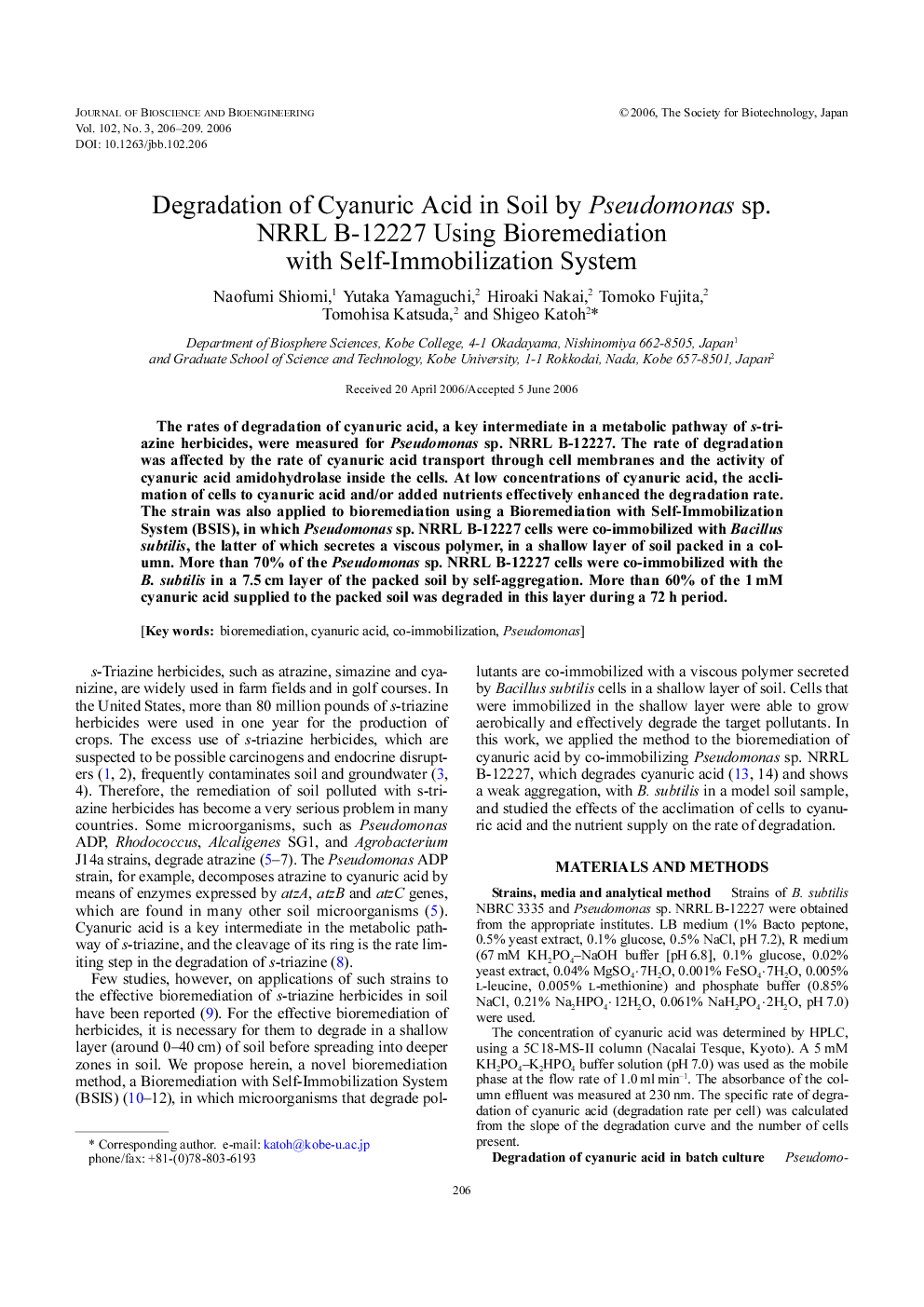| Article ID | Journal | Published Year | Pages | File Type |
|---|---|---|---|---|
| 22109 | Journal of Bioscience and Bioengineering | 2006 | 4 Pages |
The rates of degradation of cyanuric acid, a key intermediate in a metabolic pathway of s-triazine herbicides, were measured for Pseudomonas sp. NRRL B-12227. The rate of degradation was affected by the rate of cyanuric acid transport through cell membranes and the activity of cyanuric acid amidohydrolase inside the cells. At low concentrations of cyanuric acid, the acclimation of cells to cyanuric acid and/or added nutrients effectively enhanced the degradation rate. The strain was also applied to bioremediation using a Bioremediation with Self-Immobilization System (BSIS), in which Pseudomonas sp. NRRL B-12227 cells were co-immobilized with Bacillus subtilis, the latter of which secretes a viscous polymer, in a shallow layer of soil packed in a column. More than 70% of the Pseudomonas sp. NRRL B-12227 cells were co-immobilized with the B. subtilis in a 7.5 cm layer of the packed soil by self-aggregation. More than 60% of the 1 mM cyanuric acid supplied to the packed soil was degraded in this layer during a 72 h period.
